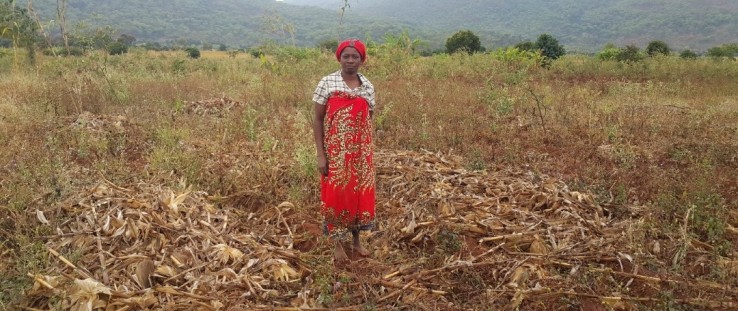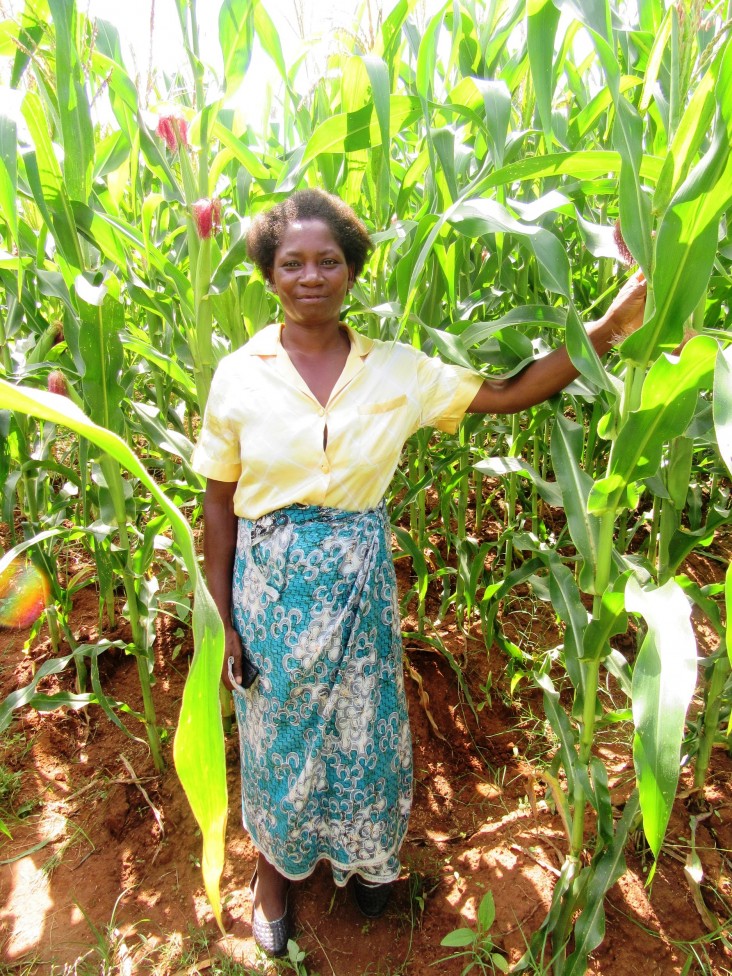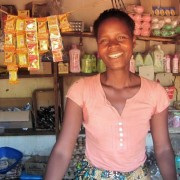 After harvesting her maize field outside Liwonde Forest Reserve, Edna Ndalama adheres to conservation agriculture practice and keeps the maize stalks in the field instead of the traditional practice of burning them.
Chisomo Mdalla
After harvesting her maize field outside Liwonde Forest Reserve, Edna Ndalama adheres to conservation agriculture practice and keeps the maize stalks in the field instead of the traditional practice of burning them.
Chisomo Mdalla
 After harvesting her maize field outside Liwonde Forest Reserve, Edna Ndalama adheres to conservation agriculture practice and keeps the maize stalks in the field instead of the traditional practice of burning them.
Chisomo Mdalla
After harvesting her maize field outside Liwonde Forest Reserve, Edna Ndalama adheres to conservation agriculture practice and keeps the maize stalks in the field instead of the traditional practice of burning them.
Chisomo Mdalla
Speeches Shim
Edna Ndalama is a dedicated and energetic smallholder farmer in Malawi’s Machinga district, where she grows and processes maize (corn) into nsima, the country’s staple carbohydrate.
Over the past decade, however, Ndalama has watched her farm’s production decline. In years with good rainfall, the 42-year-old mother of three produces enough maize to last her family only eight to nine months. In drought years, maize production sometimes lasts less than five months—a scary prospect for a family with growing children.
In Machinga and other districts in Malawi, land shortages limit many farms to a half acre or less. Farmers with small plots are more likely to prioritize short-term needs, such as feeding their family members, over longer-term priorities. They are therefore less likely to rotate crops or leave fields fallow—and soil fertility and crop yields are compromised. Farmers also face increases in climate-related droughts, limited access to affordable chemical fertilizers and low availability of quality seeds.
Eager to find ways to address her family’s growing food insecurity, Ndalama volunteered for the drought tolerant maize (DTM) trials supported by USAID/Malawi in conjunction with the Feed the Future Malawi Improved Seed Systems and Technologies Project.
The project marries drought tolerant seeds with “conservation agriculture” practices that are meant to guide moisture and water management in the soil to produce healthy crops. In addition, conservation agriculture improves soil fertility and reduces erosion. Ultimately, these practices promise higher crop yields.
“It is good to plant DTM in Malawi especially because seasons have shifted and become shorter and drier than the country used to experience years back,” said USAID/Malawi agriculture specialist Chrispin Magombo. “As a consequence, the staple crops have suffered droughts. DTMs serve to answer that enigma because improved varieties have been bred to have shorter season on the rain cycle which would be long.”
He also explained that in addition to water use efficiency, DTMs have also been bred as a stopgap to improve the availability of much needed nutrient dense foods.
A Strange New World
Ndalama received seven varieties of drought tolerant maize seeds as part of the project. With the rainy season fast approaching late last year, she went about preparing her fields for planting.
In accordance with the new techniques she had learned, Ndalama lined maize stalks in the previous year’s ridges of her field without tilling in an effort to help improve the soil’s organic matter and to help retain moisture. She thought these new farming techniques were strange, but she was optimistic—and her family needed food.
“The common practice here is to burn the dry maize stalks after harvest for ease of ridging in the subsequent planting season,” Ndalama said. “It was strange when we were told that, with the new technology, we were not to burn the stalks, but to use them. Naturally, we were skeptical, but we were curious to see what difference it would make.”
After weeks of hard work, Ndalama carefully planted the DMT seeds and hoped for the best.
By December, she noticed a difference between the DTM plants on her farm and the traditional local maize varieties grown by her neighbors. As her neighbors’ maize dried prematurely, Ndalama’s drought tolerant varieties continued to maturity. Now relaxed and smiling, Ndalama said, “Soil on the plots … retained moisture and the maize was lush, even when it did not rain for days on end.”
Several months later at harvest time, she was amazed by the results. Her plot produced six bags of maize per acre while her neighbors, who planted local maize varieties and used traditional growing methods, only produced 2.5 bags of maize per acre.
Her results were similar to the 200 farmers who also planted drought tolerant seeds in this area.
With USAID support, the project is adding 500 new farmers for the 2016-17 season. With the good rains so far this year, farmers have already reported good harvests.
When asked about her plans for the next agricultural season, Ndalama responds with a smile: “In readiness for the next planting season, I have already planned to buy again my favorite improved variety (Peacock 10), and I have laid down the old maize stalks in my farm!”
Gina Althoff is a communications and outreach specialist with USAID’S PERFORM project.






Comment
Make a general inquiry or suggest an improvement.